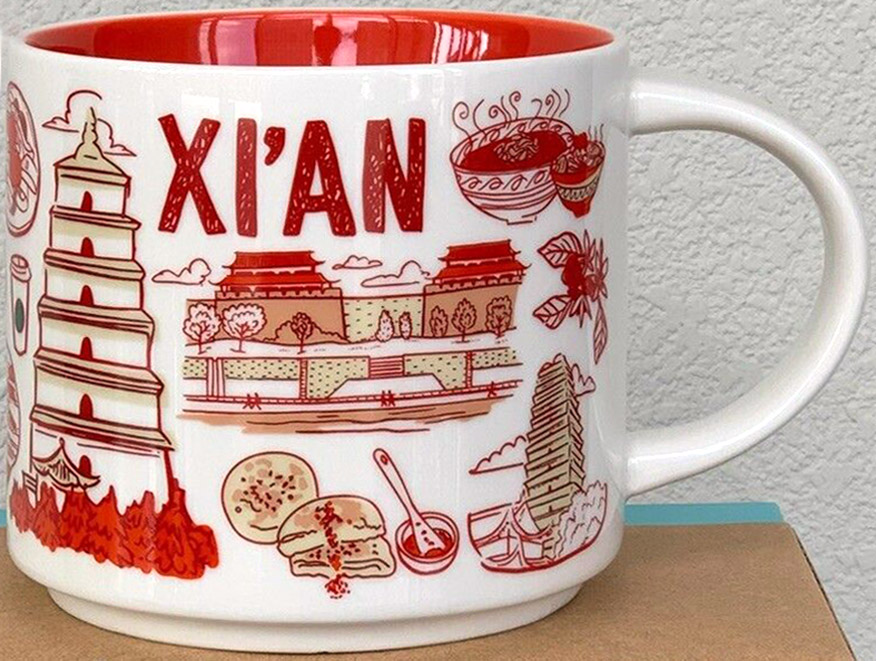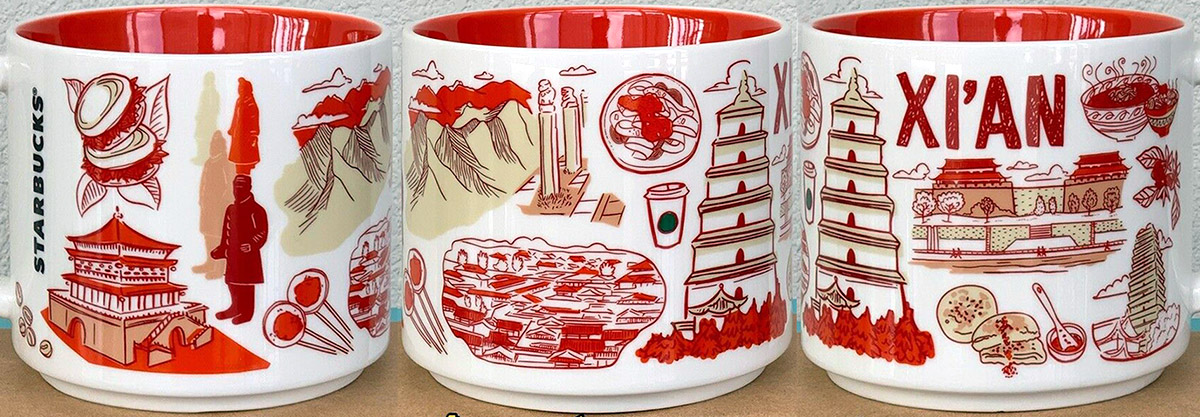
Been There – Xi’an
Here is Been There – Xi’an mug for one of China’s oldest cities, a vibrant historical epicenter of the country. Once known as Chang’an, it was the capital for several of China’s most significant dynasties, including the Zhou, Qin, Han, and Tang. This city’s historical prominence is epitomized by the famed Terracotta Army, which guards the tomb of Emperor Qin Shi Huang, the first Emperor of China. Xi’an was also the eastern terminus of the Silk Road, facilitating cultural, commercial, and technological exchanges between East and West for centuries. The city’s ancient fortifications, such as the well-preserved city wall from the Ming Dynasty, and the majestic Big Wild Goose Pagoda, a key Buddhist site, reflect its rich historical tapestry. Through its monuments and archaeological sites, Xi’an offers a profound glimpse into China’s imperial past, underscoring its pivotal role in the development of Chinese civilization.
Xi’an boasts a wealth of symbols, landmarks, and places that capture its rich history and cultural significance. Some of the most notable include:
Terracotta Army: Discovered in 1974, this massive collection of terracotta sculptures represents the armies of Emperor Qin Shi Huang, the first Emperor of China. It is a UNESCO World Heritage Site and one of the most significant archaeological finds of the 20th century. The sheer scale and detail of the figures provide a profound insight into ancient Chinese art and military history.
Ancient City Wall: This well-preserved wall dates back to the Ming Dynasty and encircles the city center. It offers a panoramic view of Xi’an and is a popular spot for walking and cycling. The wall’s impressive construction and fortifications reflect the city’s historical importance as a defensive stronghold.
Big Wild Goose Pagoda: Built in 652 during the Tang Dynasty, this Buddhist pagoda is a symbol of Xi’an and an important site for Buddhist pilgrims. It was constructed to house sacred scriptures brought from India by the famous monk Xuanzang. The pagoda stands as a testament to the profound cultural and religious exchanges facilitated by the Silk Road.
Shaanxi History Museum: This museum houses a vast collection of artifacts from Shaanxi Province, showcasing the region’s rich history and cultural heritage from prehistoric times through the Qing Dynasty. It is often considered one of China’s best museums, offering visitors a comprehensive understanding of the area’s archaeological and historical significance.
Muslim Quarter: A bustling area known for its vibrant street food scene and the Great Mosque, one of the oldest and most significant mosques in China, blending Islamic and traditional Chinese architecture. The quarter’s lively markets and unique culinary offerings highlight the cultural diversity and historical trade connections of Xi’an.
Bell Tower and Drum Tower: Located in the city center, these towers date back to the Ming Dynasty and were used to keep time and signal important events. They now serve as museums and offer insight into Xi’an’s historical role. The towers are iconic symbols of the city and provide a glimpse into ancient timekeeping methods.
Huaqing Hot Springs: A historic site located at the foot of Mount Li, famous for its natural hot springs and the romantic legend of Emperor Xuanzong and his consort Yang Guifei during the Tang Dynasty. The site also holds historical significance due to its association with various dynastic rulers and its strategic military importance.
Mount Hua (Huashan): One of China’s Five Great Mountains, known for its stunning scenery and challenging hiking trails. It has historical and religious significance, with numerous Taoist temples and shrines. The mountain’s dramatic peaks and treacherous paths have long been a source of inspiration for poets and pilgrims alike.



































































